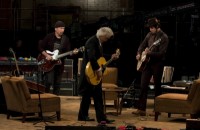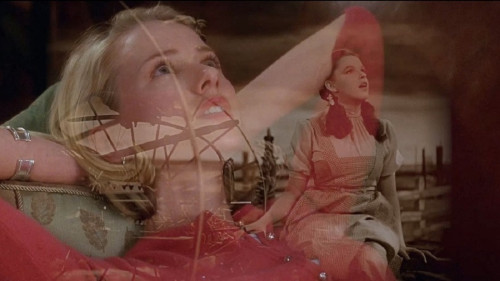Volume 14, Issue 3 / March 2010
Documentary Special
In this issue
-

Werner Herzog Between Documentary and Fiction
-

(Re)covering Oka: Alanis Obomsawin’s Representation of the Crisis at Oka
-

It Might Get Loud
Three Generations of Guitar Heroes
-

The 12th Buenos Aires Festival Internacional de Cine Independiente (BAFICI)
The 'in-between' film
-

Being There: The 2010 Sundance Film Festival
Of all the venerable cinematic forms, perhaps the most venerable is the documentary. Indeed the first image ever taken by a movie camera must have amounted to documentary. If we accept traditional history, the first publically screened movie, the Lumière brothers’ Train Arriving at the Station, was a document(ary) of that specific time/place, at gare de La Ciotat, but it also told a story of sorts: the train arrives into the station and stops (beginning), travelers disembark from their journey (middle), and new passengers board for a new destination (end). The documentary has evolved from these early days, its assignation changing from ‘actuality’ (and since many of these ‘primitive’ films were staged for the camera, the issue of ‘intervention’ was already present at the beginning), to ethnography, to documentary (a term coined by Grierson in 1926 to define Flaherty’s work), to the objective ‘voice of God’ institutional form, to the groundbreaking, revolutionary Direct Cinema of the 1960s (encompassing cinéma verité, lived cinema, etc.), to the personal/experimental form which Bill Nichols called the ‘performative mode’ of documentary, to the newest wrinkle, the mockumentary. The mockumentary has shaken the roots of documentary so much that the singular term documentary has little relevance anymore. Mockumentary has reshaped the parameters of the genre. In the least, we must certainly acknowledge that the documentary has become a huge (and often entertaining), unwieldy beast with many forms under its umbrella. The mockumentary itself comes in varied expressions. It normally either attempts to deceive its audience into thinking it is viewing non-fictional events or people (like Peter Jackson’s remarkable Forgotten Silver and Jim McBride’s classic prototype, David Holzman’s Diary), or uses the style/form of the documentary for mainly comedic, parodic, or satirical purposes (like Bob Roberts and Borat). Whether deceptive or transparent, one thing the mockumentary has proven is that you don’t have to rely on real people or events to get at some level of ‘truth’ about human nature or the social body. In fact, a subject from one of the featured films in this issue, The Edge from the music documentary It Might Get Loud, admitted that seeing This is Spinal Tap was a revelation, a shock of recognition for himself and his musical peers, akin to looking into the mirror. This issue Offscreen casts a focus on the increasingly popular documentary genre, covering more conventional variants —Alanis Obomsawin’s Kanehsatake films and the musical documentary It Might Get Loud— as well as more esoteric forms —certain Werner Herzog films, and “in-between” films, a term coined by Robert Koehler and discussed by Peter Rist in his BAFICI report. The issue concludes with Virginia Wright Wexman’s report on the 2010 Sundance film festival. (Donato Totaro, ed.)









